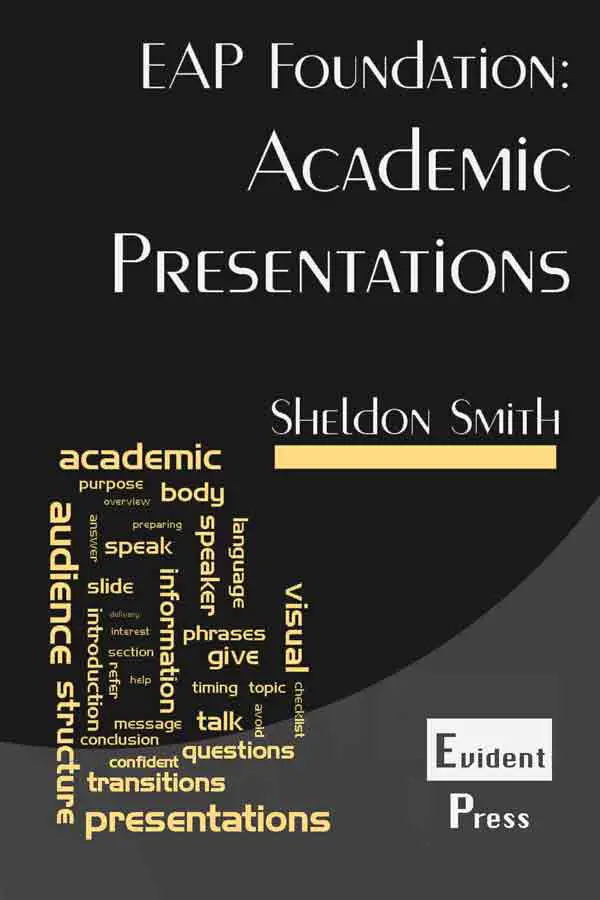Show AWL words on this page.
Show sorted lists of these words.


 







|
 Podcast is loading. Problems? Too slow? You can also access the Podcast by
clicking here.
Podcast is loading. Problems? Too slow? You can also access the Podcast by
clicking here.This message will disappear when then podcast has fully loaded.
On this page you will find language which good lecturers use to help you understand their lectures. This language is sometimes called 'lecture cues'. Many of these 'cues' (or 'signals') are similar to or the same as the signpost phrases speakers use in presentations. They are another example of the formulaic language used in academic contexts.
Why do lecturers use lecture cues? Well, not all do - but then, not all lecturers are good at lecturing!
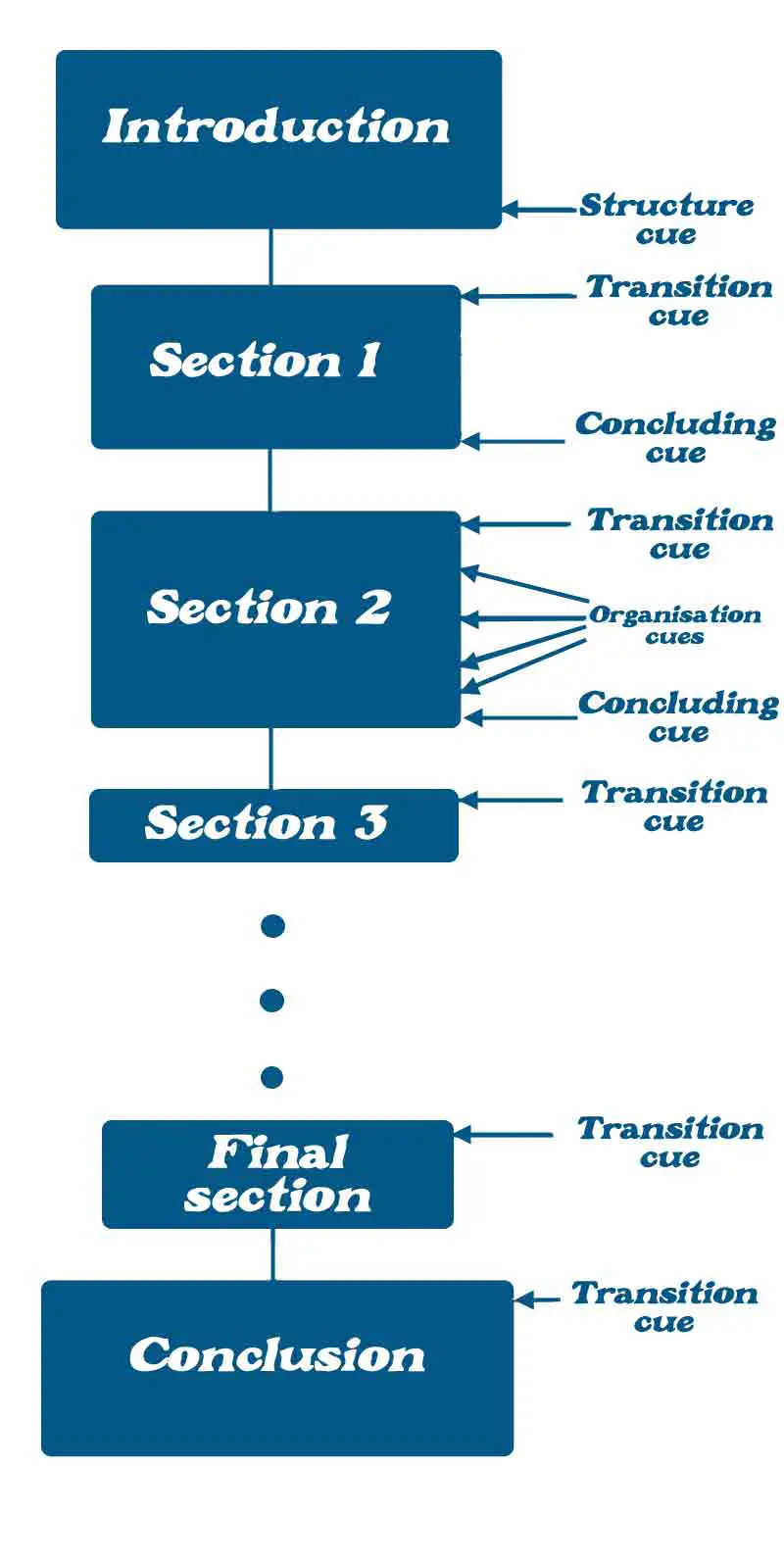 The main reason for lecturers to use lecture cues is to aid your understanding. Listening to a lecture is not as easy as
reading an article. When you are reading, you can easily see where one section (or paragraph) ends,
and another begins. You can also skim through the text to understand the main ideas and the overall structure.
You cannot do this when listening: there are no paragraphs to see, and the speed of listening is controlled by the speaker, not by you.
To help with these problems, good academic speakers, whether in lectures or
presentations, give cues to signal the structure
(structure cues), different parts of their talk
(transition cues and
concluding cues), and the connection between ideas
(organisation cues).
The main reason for lecturers to use lecture cues is to aid your understanding. Listening to a lecture is not as easy as
reading an article. When you are reading, you can easily see where one section (or paragraph) ends,
and another begins. You can also skim through the text to understand the main ideas and the overall structure.
You cannot do this when listening: there are no paragraphs to see, and the speed of listening is controlled by the speaker, not by you.
To help with these problems, good academic speakers, whether in lectures or
presentations, give cues to signal the structure
(structure cues), different parts of their talk
(transition cues and
concluding cues), and the connection between ideas
(organisation cues).
These four basic types of cue, shown in the diagram to the right, are described in more detail below.
Topic & Structure cues
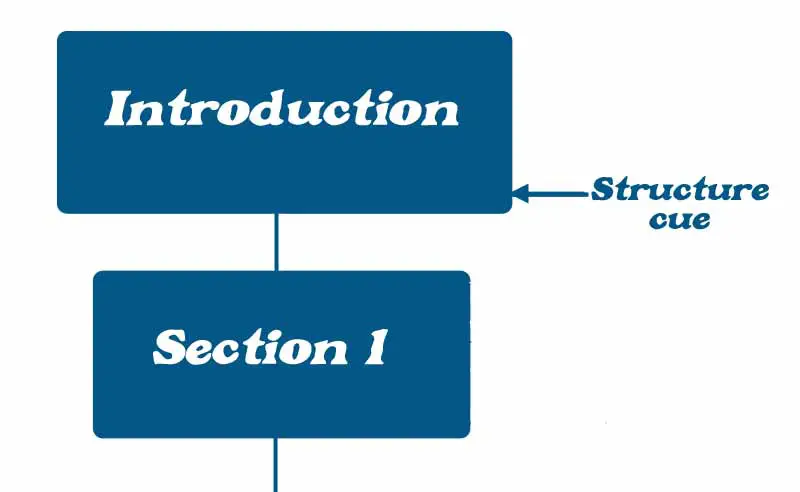
At the beginning of a lecture, the speaker needs to make two things clear: the topic of the lecture; and how the lecture will be structured, in other words, what the main sections of the talk will be. The speaker will usually do this in the introduction of the lecture, sometimes at the beginning, though often at the end of the introduction. The way the structure is stated in a lecture is similar to the thesis statement used in an academic essay or the aims in an academic report.
Some examples of structure cues are given in the box to the right. An example of a lecture about learning styles is shown below.
Stating the topic
- (What) I'd like to...
- What I'm going to look at/talk about...
- Today I'll be talking about...
- I want to talk about...
Giving the structure
- I'm going to look at/talk about three main areas...
- There are four areas I want to look at...
- In particular I want to talk about...
Good morning everyone. I hope you've all finished reading the notes from my previous lecture. Today's lecture is in many ways a continuation of what we were looking at yesterday. What I want to talk about is [topic cue] learning styles [topic]. We'll primarily be looking at four main models [structure cue]. First, we'll be looking at the Kolb model [section 1]. Then we'll consider a variant of this, the Honey and Mumford model [section 2]. The third model we'll look at is the VAK model [section 3], perhaps the best known of all of them. Finally, we'll consider a popular model in the USA, the Dunn and Dunn model [section 4].
Transition cues
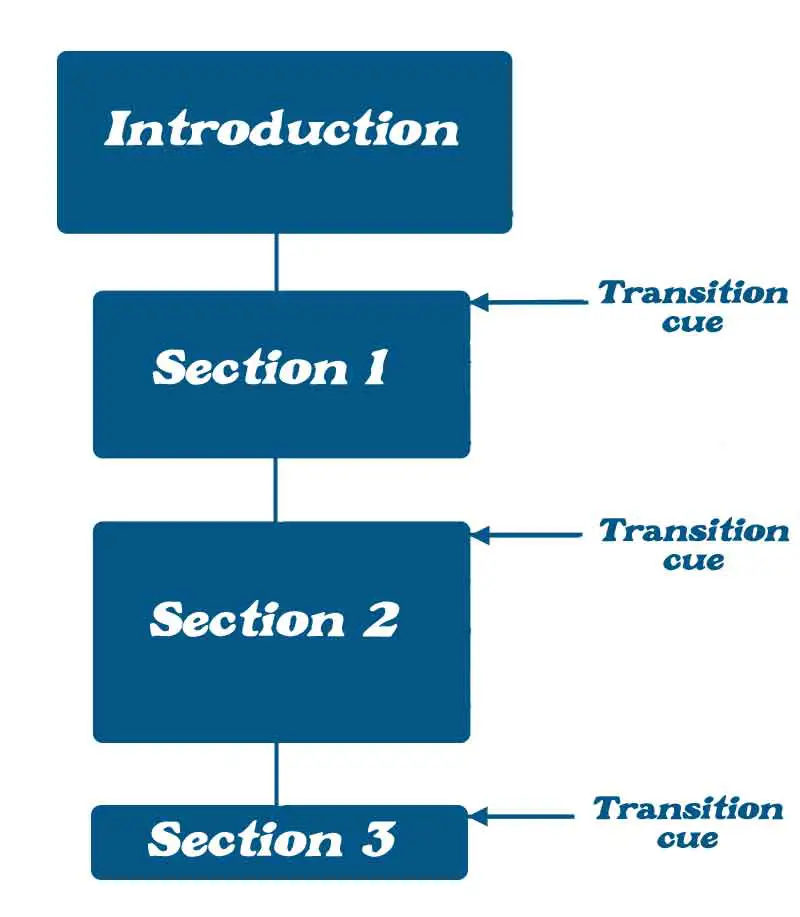
A vital part of any lecture is 'transitioning' (moving on) to a new section. Why is this so crucial? Mainly because of the difference between listening and reading. When you are reading, you can easily see where one section (or paragraph) ends, and another begins. This is not true when you are listening. To help with this, good academic speakers, whether in lectures or presentations, give cues to signal the start of a section. This helps the listener understand the structure and follow the main points.
Transition cues
I. Phrases
- Let's now move on to/turn to...
- I now want to go on to...
- This leads/brings me to my next point, which is...
- I'd now like to move on to/turn to....
- So far we have looked at... Now I'd like to ...
II. Words
- OK...
- Well...
- So...
- All right...
- Right...
- Now...
- Good...
III. Questions
- What are the reasons for this?
There are three types of transition cue which a lecturer could use. The first is phrases such as 'Let's move on to...'. These usually are quite easy to notice, especially after some practice. Lecturers also use single words, especially 'OK' or 'All right', to show they are moving on to a new section. These are more difficult to notice, though you will gradually get used to the ones your lecturers use most often. These are often combined with transition phrases, for example 'OK, let's move on to...'. The third and final type of transition cue is rhetorical questions. These are questions the speaker asks, but does not expect the audience to answer. The lecturer will answer his own question, and this answer will be the new section of the lecture. For example, if the lecturer asks 'What are the reasons for this?' then this could signal a new section, in which he will list the reasons.
Some transition cues are shown in the box, including examples of all three types. An example of a transition cue, in a lecture on learning styles, is shown below.
So that's the Kolb model. Let's move on now to consider [transition cue] another model, the Honey and Mumford model [new section]. This model is really a variant of the Kolb model, so in many ways it is very similar.
Concluding cues
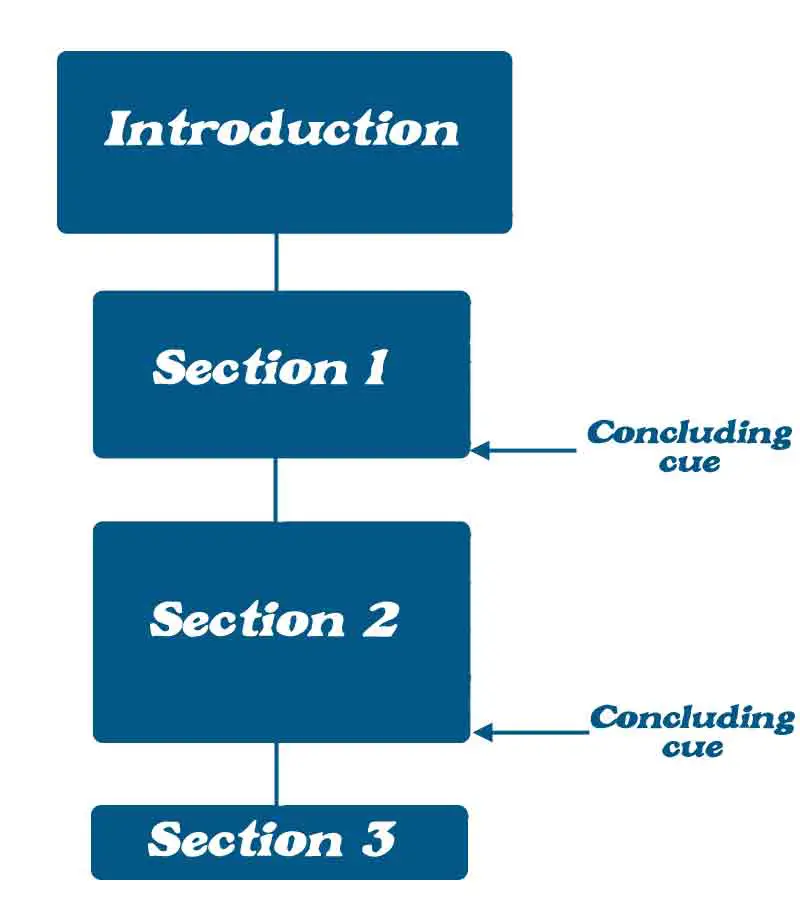
In a lecture, it is important not only to signal the beginning of a section, but also its ending. Speakers often do this by using some sort of concluding cue. It should be highlighted here that this is not the conclusion of the whole lecture - though that is also important - but just the end of a section within the lecture.
Some common concluding cues are given in the box to the right. An example, from a lecture on learning styles, is shown below.
Concluding cues
- So...
- So, to sum up...
- Thus...
- Therefore...
- To recap...
So [concluding cue] that's the Kolb model [section being concluded]. Let's move on now to consider...
Organisation cues
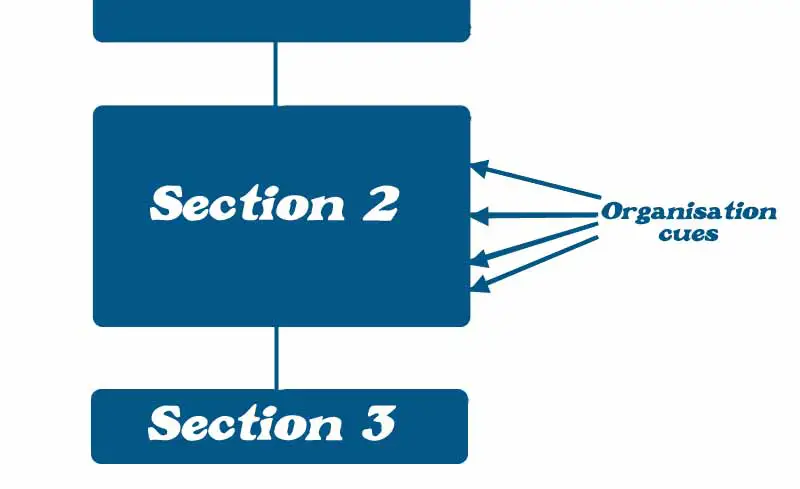
There are other cues which speakers use during a lecture to help you understand the structure and flow of ideas. These include giving examples, addition of new ideas, contrasting, and listing.
Phrases for all of these are given in the box to the right. An example, from a lecture on learning styles, is shown below.
Giving examples
- Let me give you an example...
- such as...
- for instance ...
- A good example of... is ...
Addition
- In addition...
- Moreover...
- Another point...
- Not only... but also...
Contrasting
- But...
- However...
- On the other hand...
- In contrast to this...
Listing
- First.../The first...
- Next...
- Another...
- A final...
There are many useful tools that visual learners can use to help them improve their study. One example is [organisation cue - giving examples] using pictures. So when they learn new vocabulary, rather than just writing the meaning, they can try to draw a picture, to make it more visual. Or a different example might be [organisation cue - giving examples] the diagram of the Kolb learning cycle, which you can see on your handouts. Another example [organisation cue - giving examples] is using maps or charts, or for history subjects, use a time line.
Checklist
Below is a checklist for lecture cues.
| Item | OK? | Comment |
| I understand how the speaker can introduce the topic & structure | ||
| I know what transition cues are | ||
| I understand what concluding cues are | ||
| I know some examples of cues to organisation |
Next section
Read more about note-taking in the next section.
Previous section
Read the previous article about understanding lectures.

